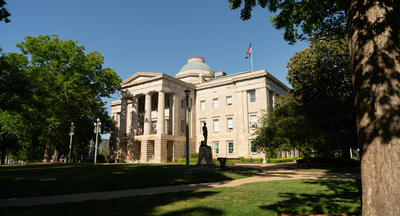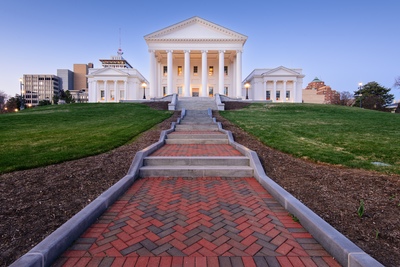
State Government Affairs, Elections & Campaigns
How Lieutenant Governors Are Selected (And Why It Matters)
December 10, 2025 | Bill Kramer
September 15, 2020 | Bill Kramer

Key Takeaways:
This is the second of several 2020 state elections preview posts we’re publishing over the next few weeks. Last week we discussed the gubernatorial races. You can keep track of all the latest information on our 2020 state elections landing page.
Republicans have dominated control of state legislatures over the past decade, but Democrats have slowly regained ground over the past couple of election cycles.
Currently, across the 99 state legislative chambers, there are 3,849 Republicans, 3,455 Democrats, 34 Independents, and 45 vacant seats. The chambers themselves (each state has an upper and lower chamber, except unicameral Nebraska) are in unique political alignment in each state. The same party controls both chambers of the legislature in every state except Minnesota (Democratic Senate and Republican House) and Alaska (Republican Senate and the House is controlled by a coalition of Democrats and centrist Republicans). In total, Republicans control 59 state legislative chambers, Democrats control 39 legislative chambers, and a coalition controls the Alaska House.

But how might this all shift after the 2020 elections? There are 5,877 (out of 7,383) state legislative seats up for election on November 3. Using the projections produced by election forecasters CNalysis, there are six state legislative chambers currently held by Republicans that have the potential to flip to Democrats next year. The most likely is the Minnesota Senate, which CNalysis rates as “Tilt Democratic.” Furthermore, the Iowa House, Michigan House, and both the Senate and House in Arizona are all rated as “Toss-Up.” Finally, the Pennsylvania House and North Carolina House are rated as “Lean Republican” and “Tilt Republican,” respectively, so there is a smaller chance these chambers flip to Democratic control in 2021.
Minnesota remains Democrats’ biggest chance to flip a chamber, and by flipping the Senate, Democrats would gain a trifecta in Minnesota (presuming they keep control of the House as well, which CNalysis rates as “Likely Democratic”). Republicans have an opportunity to regain control of the Alaska House from the current coalition of moderate Republicans and Democrats currently leading that chamber. The Alaska House is rated as “Lean Democratic,” but coalitions are difficult to hold together after an election. Other, less likely chances for Republicans to flip Democratic-controlled chambers include the Connecticut House (“Likely Democratic”), Maine House (“Likely Democratic”), and both the New Hampshire House (“Likely Democratic) and Senate (“Tilt Democratic”).
While the chances of Democrats flipping governors’ seats in 2020 are slim, the party has real opportunities to take control of a handful of state legislative chambers from Republicans on November 3. If Democrats have a good night on November 3, they'd pick up the Minnesota Senate, take all the chambers rated "Toss-Up," and keep their coalition in Alaska. That would give Democrats control of five additional legislative chambers and pull within 10 legislative chambers (44- 54) of the Republicans nationwide.
For more information, check out MultiState’s 2020 state elections landing page.

December 10, 2025 | Bill Kramer
-238a17-400px.jpg)
December 10, 2025 | Bill Kramer

November 5, 2025 | Bill Kramer